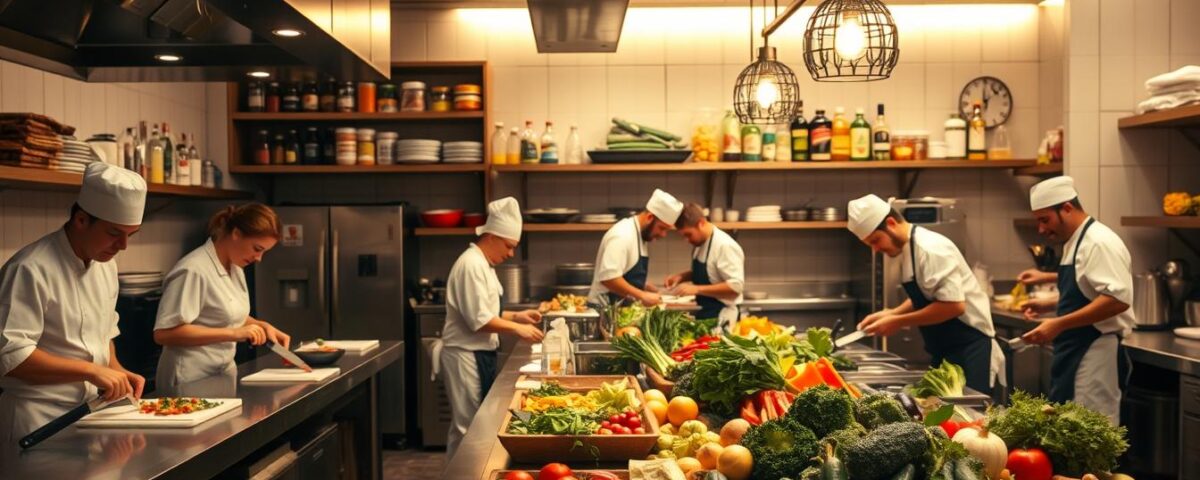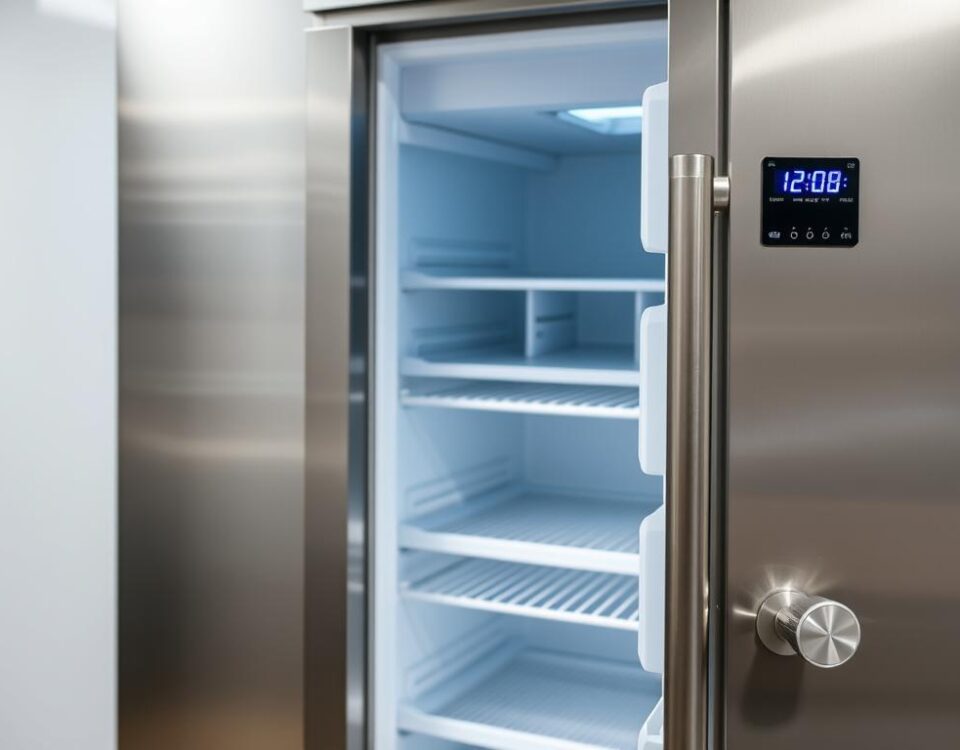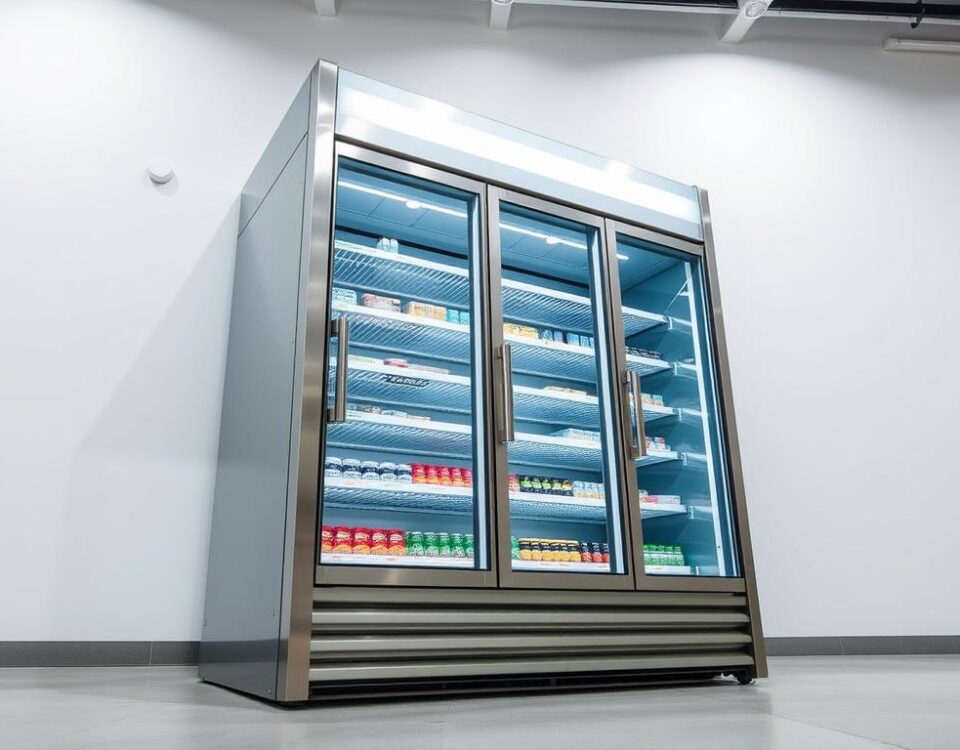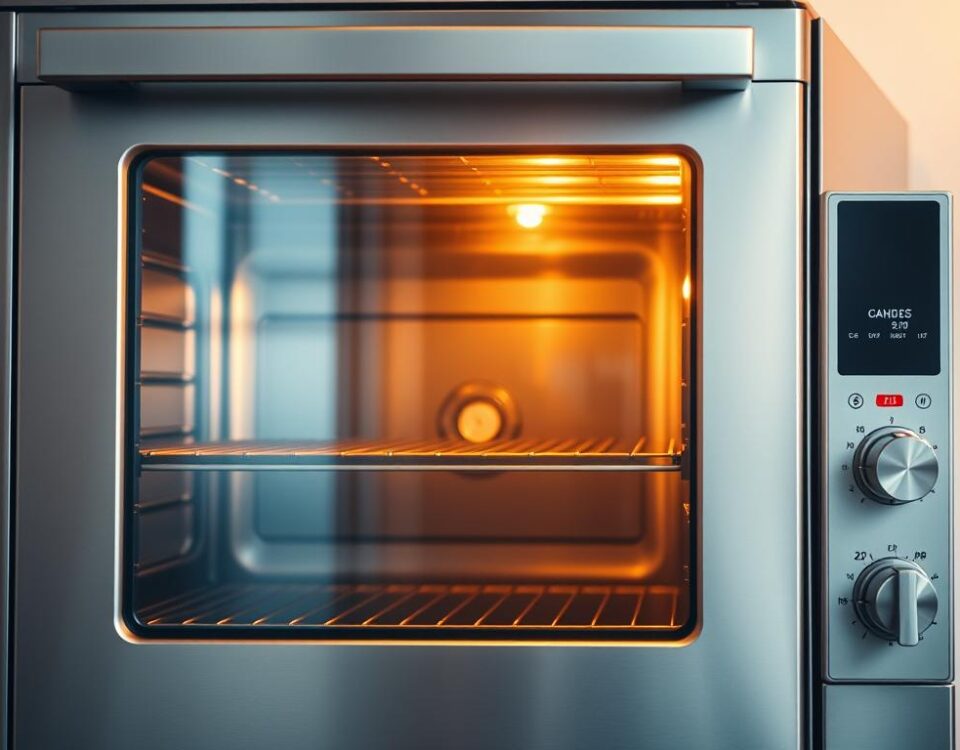
6 Hidden Psychology Tricks to Boost Sales Through Menu Layout
July 26, 2025
How to Pass Every Health Code Inspection on the First Try
July 27, 2025As a restaurant owner, I’ve seen firsthand the impact of food waste on the bottom line. It’s a problem that affects not just our business, but also our customers and the environment. Did you know that the U.S. sends more food to landfills than any other material, with restaurants losing $2 billion annually due to waste?
This staggering statistic is not just an environmental issue; it’s also a business concern. With 72% of U.S. diners caring about how restaurants handle food waste, and nearly half willing to pay more to eat at establishments that take steps to reduce food waste, it’s clear that reducing waste is both environmentally responsible and financially beneficial.
So, how can you make a change? By implementing the right strategies, you can minimize waste without compromising on quality. In this guide, I’ll walk you through six proven tips to help you achieve just that.
Key Takeaways
- Understand the scale of food waste in the U.S. and its impact on restaurants.
- Learn how customer attitudes towards food waste can affect your business.
- Discover the financial benefits of reducing food waste in your restaurant.
- Preview the six strategies to reduce waste without hurting quality.
- Get started on implementing a systematic approach to minimize waste.
The Hidden Cost of Food Waste in Restaurants
The true cost of food waste in restaurants extends far beyond the kitchen, affecting both the bottom line and the environment. Food waste is a pervasive issue that impacts restaurants in multiple ways, from financial losses to environmental degradation.
Financial Impact on Your Bottom Line
Food waste directly affects a restaurant’s financial performance. The cost of ingredients, labor, and resources used to prepare wasted food adds up quickly. By reducing food waste, restaurants can lower their operational costs and improve profitability. It’s estimated that reducing food waste can lead to significant savings, which can be reinvested in the business or used to enhance customer experience.
Moreover, food waste also represents a loss of potential revenue. When food is wasted, it’s not being sold, and this lost sales opportunity can have a significant impact on a restaurant’s bottom line. Implementing effective inventory management and menu planning can help minimize this loss.
Environmental Consequences of Restaurant Food Waste
The environmental impact of food waste is substantial. When food waste ends up in landfills, it decomposes and produces methane, a potent greenhouse gas with over 80 times the warming power of carbon dioxide. Food waste accounts for approximately 8%-10% of global greenhouse gas emissions, making it a significant contributor to climate change.
- Food waste in landfills produces methane, contributing to climate change.
- Wasted food represents wasted resources, including water, land, energy, and labor.
- Reducing food waste can help lower a restaurant’s carbon footprint and contribute to environmental sustainability.
By understanding the financial and environmental implications of food waste, restaurants can take proactive steps to reduce food loss and improve their sustainability. This not only benefits the environment but also enhances the restaurant’s brand value and appeal to environmentally conscious consumers.
Why Reducing Food Waste Matters for Your Restaurant
In the restaurant industry, reducing food waste is not just a moral imperative but a business necessity that affects customer perception and regulatory compliance. As a restaurant owner, it’s essential to understand the multifaceted benefits of minimizing waste.
Customer Perception and Brand Value
Customers increasingly favor businesses that adopt sustainable food waste reduction practices. By minimizing waste, your restaurant can enhance its brand value and appeal to environmentally conscious diners. This proactive approach can lead to improved customer loyalty and positive word-of-mouth, ultimately benefiting your bottom line.
Regulatory Compliance and Future Trends
The regulatory landscape around food waste is evolving. Governments and industry associations are implementing stricter guidelines and certification programs that incorporate food waste reduction into their standards. By adopting waste minimization practices early, your restaurant can stay ahead of these regulations, potentially saving time and money while gaining a competitive advantage.
If current trends persist, food loss and waste will double by 2050, making it crucial for restaurants to adopt sustainable practices now. By doing so, your business can not only comply with future regulations but also contribute to a more sustainable food industry.
Conducting a Food Waste Audit in Your Restaurant
Before you can reduce food waste, you need to know what’s being wasted and why. Conducting a thorough food waste audit is the first step towards creating a more sustainable kitchen.
To start your audit, you need to set up a comprehensive waste tracking system. This involves creating a detailed food logging system that includes all relevant categories for the food products your restaurant sells, as well as other types of waste you want to track or reduce.
Setting Up Your Waste Tracking System
Setting up your waste tracking system requires careful planning. You need to decide what data to collect, how to collect it, and who will be responsible for tracking and analyzing the data. It’s essential to include all types of waste, such as food waste, packaging waste, and other disposable materials used in your kitchen.
To make data collection easier, consider using a simple and standardized form or digital tool. Train your staff to log waste regularly, ideally at the end of each service or daily. Consistency is key to getting accurate data.
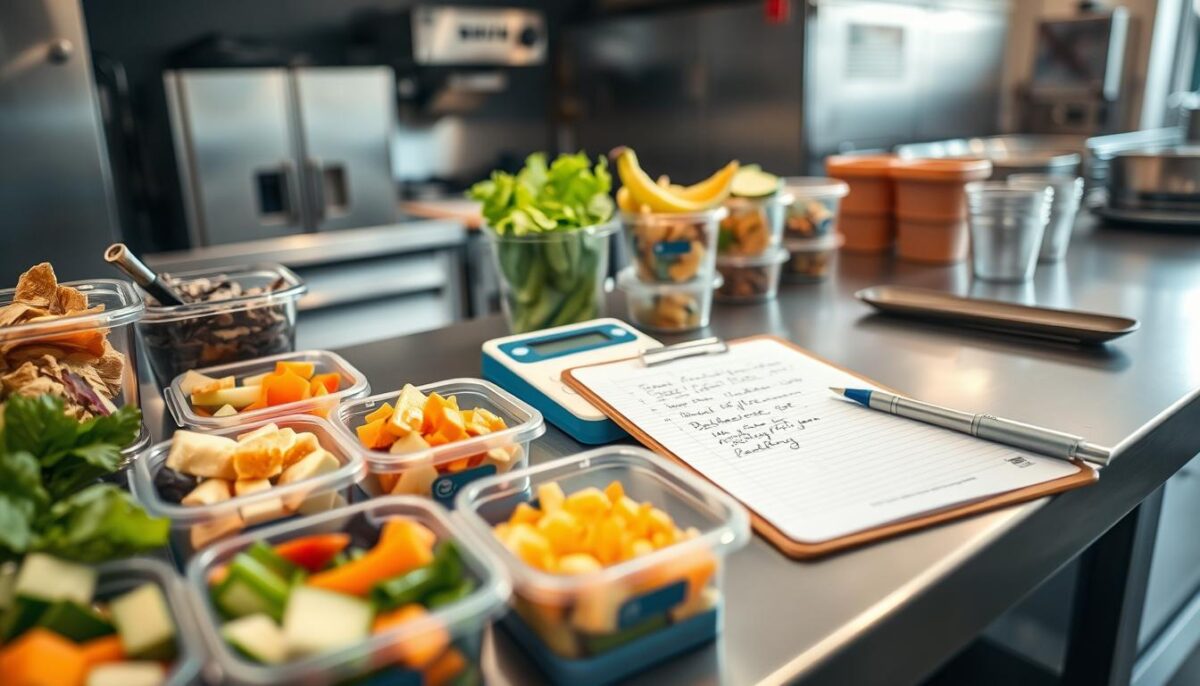
Analyzing Your Waste Data for Actionable Insights
Once you’ve collected sufficient data, it’s time to analyze it to identify patterns and problem areas. Categorize waste by type, source, and reason to get a clear picture of where your biggest opportunities for improvement lie.
Here’s an example of how you can analyze your waste data:
| Waste Category | Quantity (kg) | Financial Loss ($) |
|---|---|---|
| Food Waste | 100 | 500 |
| Packaging Waste | 50 | 200 |
| Total | 150 | 700 |
By analyzing your waste data, you can identify your “top offenders” – the items that are wasted most frequently or represent the highest financial loss. This information allows you to focus your waste reduction efforts where they’ll have the most impact.
Using these insights, you can set realistic waste reduction goals based on your audit findings. This will help you create a targeted strategy to minimize waste and maximize savings.
6 Proven Strategies to Reduce Food Waste in Restaurants
As a restaurant owner, tackling food waste is not just about saving money, but also about being environmentally responsible. Implementing effective strategies to reduce food waste can have a significant impact on your bottom line and contribute to a more sustainable future.
Strategy #1: Optimize Inventory Management with FIFO
Implementing a First-In, First-Out (FIFO) inventory system ensures that older stock is used before it expires, reducing the likelihood of waste. This involves organizing your storage to prioritize items based on their expiration dates. By doing so, you can minimize the risk of having to discard expired or spoiled ingredients.
To effectively implement FIFO, it’s crucial to:
- Label all stored ingredients with their purchase or delivery dates.
- Train your staff to always pick the oldest stock first.
- Regularly audit your inventory to ensure compliance with the FIFO system.
Strategy #2: Implement Proper Food Storage Techniques
Proper food storage is critical in maintaining the freshness and quality of your ingredients. This involves storing food at the correct temperatures and ensuring that storage areas are clean and well-maintained.
Some key practices include:
- Storing raw meat, dairy, and other perishables at the appropriate refrigerated temperatures.
- Using airtight containers to store dry goods and prevent moisture from affecting their quality.
- Keeping storage areas clean and pest-free to prevent contamination.
Strategy #3: Design a Waste-Conscious Menu
Your menu can play a significant role in reducing food waste. By designing dishes that utilize ingredients that are commonly wasted or nearing expiration, you can significantly cut down on waste.
Consider:
- Creating specials or limited-time offers using ingredients that are approaching their expiration dates.
- Incorporating typically wasted parts of ingredients into your dishes, such as using vegetable peels in soups or stocks.
- Offering dishes that can be made with ingredients that are in season and abundant, reducing the likelihood of waste.
Strategy #4: Train and Engage Your Staff
Your staff is on the frontline of food waste reduction. Training them on the importance of minimizing waste and involving them in the process can lead to significant reductions.
Key steps include:
- Educating staff on the financial and environmental impacts of food waste.
- Involving staff in brainstorming sessions to come up with creative ways to reduce waste.
- Recognizing and rewarding staff for their contributions to waste reduction efforts.
Strategy #5: Control Portion Sizes Without Compromising Quality
Controlling portion sizes is a straightforward way to reduce waste. By offering a range of portion sizes, you can cater to different customer appetites, reducing the likelihood of uneaten food being wasted.
Strategies include:
- Offering smaller or ‘junior’ portions for a lower price.
- Allowing customers to customize their meal sizes.
- Training staff to gauge customer appetite and make recommendations accordingly.
Strategy #6: Repurpose Food Scraps and Leftovers
Repurposing food scraps and leftovers is a creative way to reduce waste. This can involve turning yesterday’s leftovers into tomorrow’s specials or using food scraps to make stocks, sauces, or other dishes.
Some ideas include:
- Starting a composting program to turn unavoidable food waste into nutrient-rich soil for an on-site garden.
- Preserving excess ingredients through pickling, fermenting, dehydrating, or freezing.
- Creating a “second life” program for ingredients, transforming them into new dishes or products.
By implementing these six strategies, restaurants can significantly reduce their food waste, contributing to both cost savings and environmental sustainability.
Leveraging Technology to Combat Food Waste
In today’s digital age, leveraging technology is crucial for restaurants to combat food waste effectively. By adopting the right technological solutions, restaurants can significantly reduce their food waste and improve their overall efficiency.
Inventory Management Software Solutions
Inventory management software is a powerful tool that helps restaurants track their stock levels, monitor usage patterns, and optimize their inventory. By using such software, restaurants can minimize overordering and reduce waste. Some inventory management systems also offer features like automated ordering and forecasting, which can further help in reducing food waste.
Food Waste Tracking and Analytics Tools
Food waste tracking and analytics tools take inventory management to the next level by providing detailed insights into waste patterns. These tools use AI-powered waste tracking to automatically identify and categorize waste, making the tracking process more efficient and accurate. Analytics platforms can then transform raw waste data into actionable insights, helping restaurants identify their biggest waste challenges and opportunities.

By leveraging these technological solutions, restaurants can not only reduce their food waste but also improve their bottom line and contribute to a more sustainable environment.
Measuring Success: KPIs for Your Food Waste Reduction Program
Evaluating the success of your food waste reduction initiatives requires a comprehensive approach that includes both financial and environmental metrics.
To effectively measure the impact of your efforts, you need to track relevant KPIs. Financial metrics are crucial for understanding the economic benefits of your waste reduction program.
Financial Metrics to Track
Key financial metrics include cost savings from reduced food waste, improved inventory turnover, and potential revenue from repurposing or donating surplus food. By monitoring these metrics, you can quantify the direct financial impact of your waste reduction efforts on your restaurant’s bottom line.
Environmental Impact Measurements
In addition to financial metrics, tracking environmental impact is essential. This includes measuring greenhouse gas emissions avoided through waste reduction, water savings, and land use reduction. For instance, food waste fuels climate change, accounting for approximately 8%-10% of global greenhouse gas emissions. By quantifying these environmental benefits, you can enhance your restaurant’s sustainability profile and appeal to eco-conscious customers.
- Measure greenhouse gas emissions avoided through your waste reduction program.
- Track water and land use savings associated with reduced food waste.
- Incorporate environmental metrics into your marketing and customer communications.
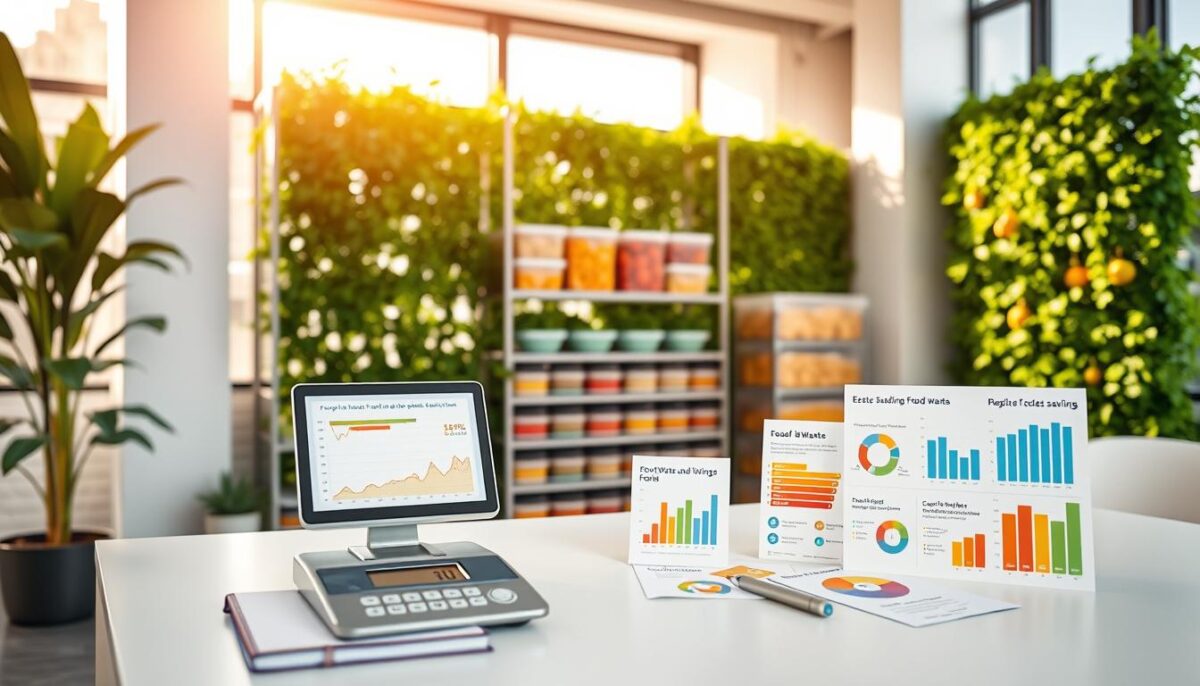
Conclusion: Building a Sustainable Restaurant Culture
As we’ve explored, minimizing food waste in restaurants is both an environmental necessity and a business opportunity. By implementing the six proven strategies outlined, you can reduce waste without compromising quality or customer experience. This holistic approach addresses every stage of your restaurant operations, from inventory management to staff training.
Creating a culture where waste reduction is second nature for all staff members is crucial. Start with small, manageable changes and gradually build a comprehensive waste reduction program. Reducing food waste is not just an environmental responsibility; it’s also a significant business opportunity. By leading the way in addressing the global food waste challenge, the restaurant industry can make a substantial impact.
FAQ
How can I identify areas of food loss in my restaurant?
To identify areas of food loss, I conduct a thorough analysis of my kitchen’s inventory management and storage practices. This includes monitoring shelf life, tracking expiration dates, and observing food preparation processes.
What are some effective ways to minimize leftovers?
To minimize leftovers, I consider implementing dynamic menu planning, adjusting portion sizes, and offering flexible meal options that cater to different customer preferences.
How can I engage my staff in food waste reduction efforts?
I involve my staff by providing training on best practices, encouraging their input on waste reduction strategies, and recognizing their contributions to minimizing food waste.
What role does temperature control play in reducing food spoilage?
Maintaining proper temperature control is crucial in preventing food spoilage. I ensure that my kitchen’s storage areas and display cases are set at the right temperatures to prolong the shelf life of perishable ingredients.
Can technology really help reduce food waste?
Yes, technology can significantly help reduce food waste. I utilize inventory management software and food waste tracking tools to monitor my kitchen’s food usage and identify areas for improvement.
How can I measure the success of my food waste reduction program?
To measure the success of my food waste reduction program, I track key performance indicators (KPIs) such as food waste reduction percentages, cost savings, and environmental impact. These metrics help me refine my strategies and achieve my goals.
